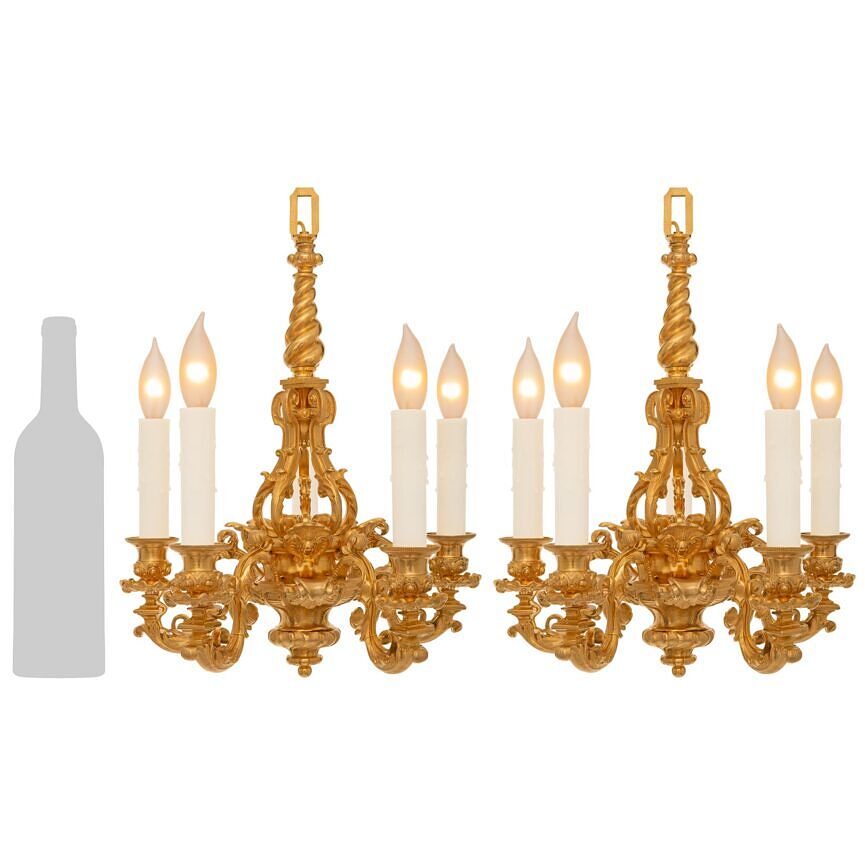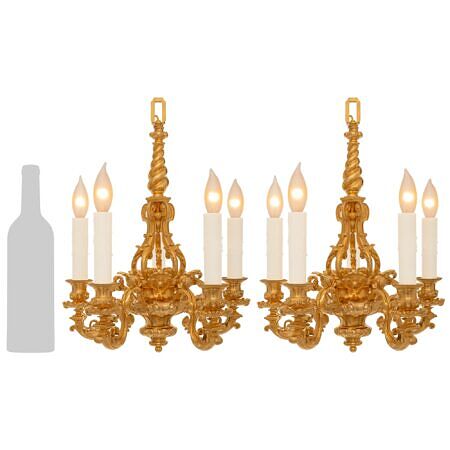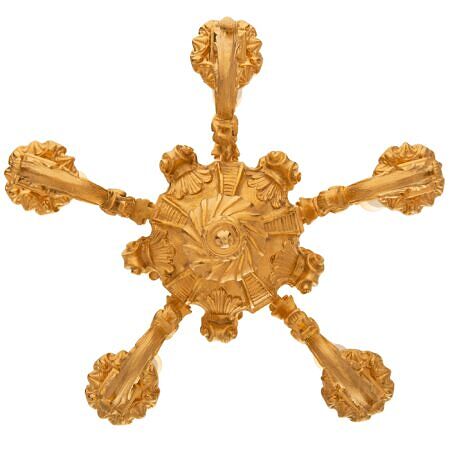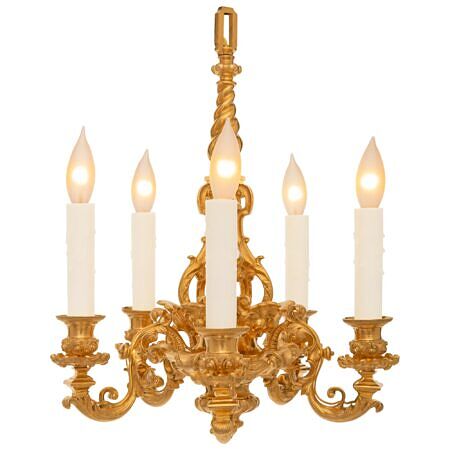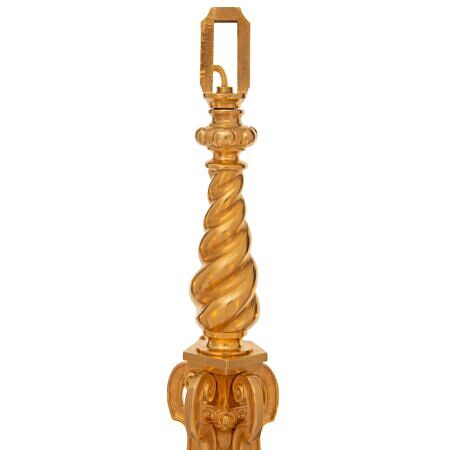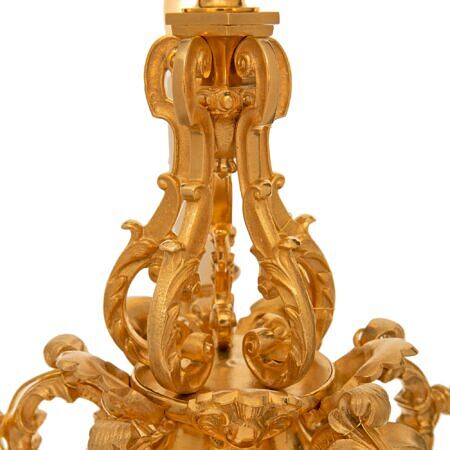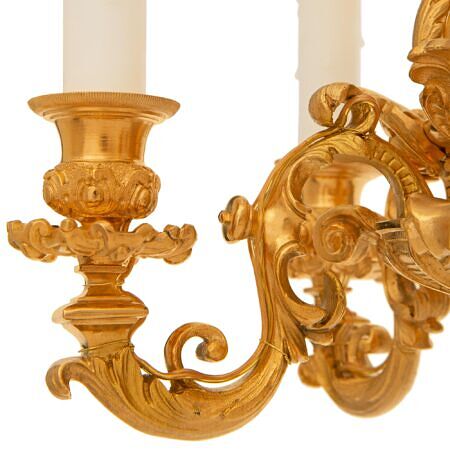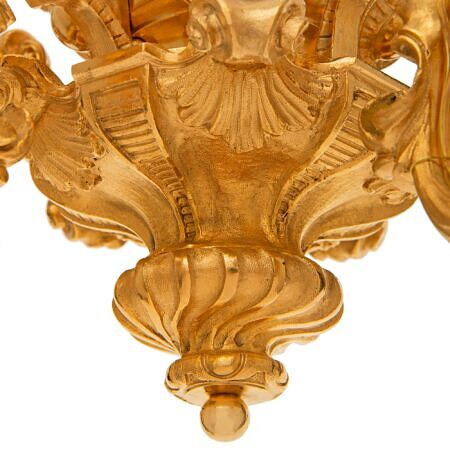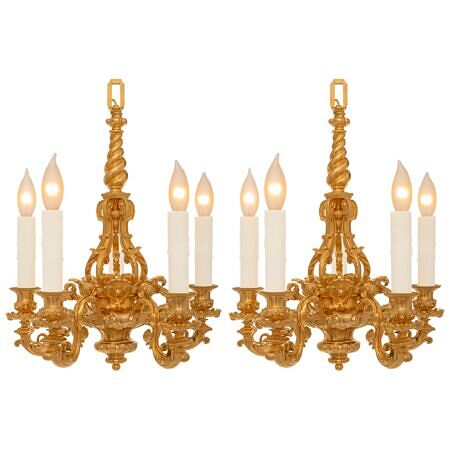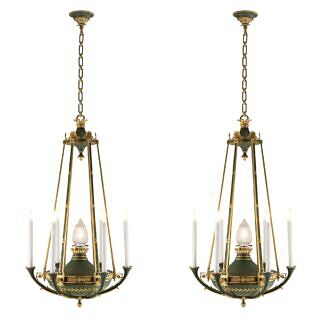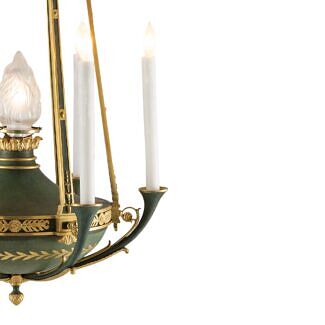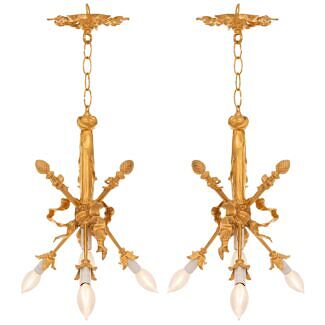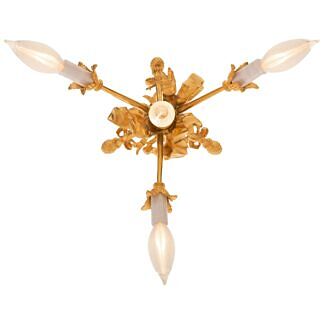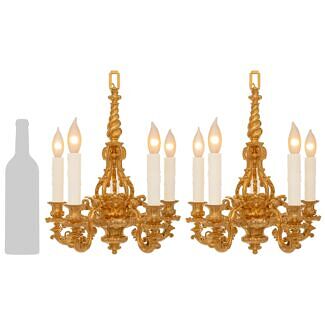A pair of French 19th century Renaissance st. Belle Epoque Period Ormolu chandeliers
List: $18,900.00
An exquisite and small scale pair of French 19th century Renaissance st. Belle Epoque Period Ormolu chandeliers. The five arm chandeliers are centered by a smooth elegant spherical finials below an inverted bell shaped reeded designed body. The five 'S'... — Read More
An exquisite and small scale pair of French 19th century Renaissance st. Belle Epoque Period Ormolu chandeliers. The five arm chandeliers are centered by a smooth elegant spherical finials below an inverted bell shaped reeded designed body. The five 'S' scrolled arms are decorated by acanthus leaves and additional scrolls leading to scalloped saucers and cabochon decorated candle cups. The arms are joined by a stunning Ormolu reserve with four scrolled foliate supports connected at the top and below a spiral twisted fut ending with a decorative geometric hoop. — Read Less
- Weight: 10 lbs / 4.535 kg
Shades, Canopies and Chain shown for display purposes, sold separately.
- Item # 13585
-
H: 16 in L: 12 in D: 12 in
H: 41 cm L: 30 cm D: 30 cm
- France
- 19th Century
- Ormolu
- Belle Époque Period Read More, Renaissance st. Read More
Related products
-
# 8788 - H: 60" D: 23"
-
# 12587 - H: 23" L: 11" D: 11"


